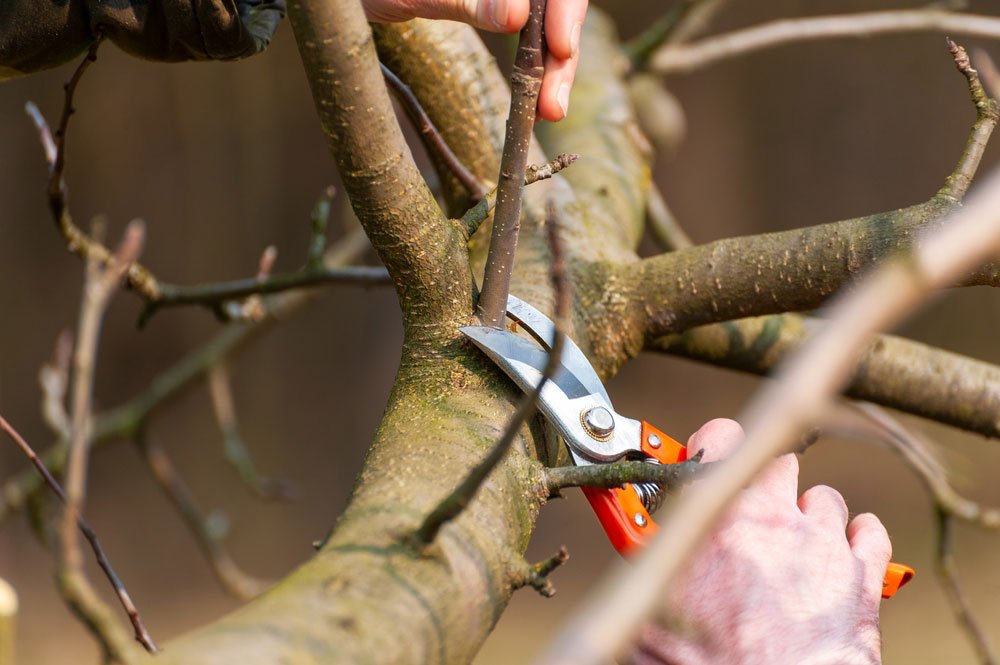
When managing a tree’s growth, have you considered that pruning might be your most effective tool?
It’s not merely about removing branches; it’s about shaping the tree to fit its environment and promoting healthy growth.
By employing techniques such as crown reduction and lateral pruning, you can control unwanted height while maintaining a compact form.
Additionally, selective thinning enhances light and air circulation, boosting the tree’s vitality.
But how do these methods ensure a balanced and aesthetically pleasing tree?
There’s much more to pruning than meets the eye, and it’s definitely worth exploring further.
Benefits of Pruning
Pruning is a vital horticultural practice that offers numerous advantages for your trees and your property.
Improved Tree Health:
- Disease Prevention: Removing diseased or infected branches can prevent the spread of disease throughout the tree.
- Enhanced Nutrient Absorption: Pruning can improve the tree’s ability to absorb nutrients and water.
- Stimulated Growth: By removing dead or dying wood, you can encourage new growth and vitality.
Enhanced Safety:
- Reduced Risk of Falling Branches: Removing weak or damaged branches can minimize the risk of property damage and personal injury.
- Improved Structural Integrity: Pruning can help maintain the tree’s structural integrity, making it more resistant to wind and storms.
Aesthetic Benefits:
- Improved Appearance: Pruning can help to shape and maintain the desired form of your trees.
- Increased Property Value: Well-maintained trees can significantly enhance the curb appeal of your property.
By regularly pruning your trees, you can ensure their long-term health and beauty.
Techniques for Size Control
Controlling the size of a tree is essential for maintaining its health and safety, as well as for preserving the aesthetics of your landscape.
Here are some effective techniques:
Pruning Techniques:
- Crown Reduction: This involves removing the top portion of the tree to reduce its overall height.
- Thinning: This technique involves selectively removing branches to improve air circulation and light penetration.
- Lateral Pruning: This involves cutting back lateral branches to encourage more vertical growth.
Timing of Pruning:
- Dormant Season: Pruning during the dormant season, typically late winter or early spring, is ideal for most trees. This minimizes stress on the tree and promotes healing.
- Summer Pruning: Summer pruning can be used to remove dead or diseased wood and to shape the tree. However, avoid heavy pruning during this time, as it can stress the tree.
By understanding these techniques and timing your pruning efforts, you can effectively control the size of your trees and maintain a beautiful and safe landscape.
Shaping for Aesthetic Appeal
Pruning is not just about maintaining tree health; it’s also an art form that can significantly enhance the aesthetic appeal of your landscape.
By strategically shaping your trees, you can create stunning focal points and elevate the overall beauty of your outdoor space.
Key Techniques for Shaping Trees:
- Topping: While topping is often discouraged due to its detrimental effects on tree health, controlled topping can be used to reduce the height of a tree. However, it should be done carefully and sparingly.
- Thinning: Removing selected branches from the interior of the crown can improve air circulation and light penetration, promoting healthier growth.
- Heading Back: Cutting back branches to a lateral bud can stimulate branching and create a denser, more compact form.
- Selective Pruning: Removing specific branches to shape the tree and create a desired silhouette.
Timing and Considerations:
- Season: The best time to prune most trees is during their dormant period, typically late winter or early spring.
- Tree Species: Different tree species have different pruning requirements. Research the specific needs of your trees.
- Local Climate: Consider your local climate and weather conditions when choosing a pruning time.
By understanding the principles of tree shaping and applying them with care, you can create a beautiful and functional landscape that will enhance your property for years to come.
In conclusion, regular pruning is essential for controlling the size and shape of your trees, ensuring their health, safety, and aesthetic appeal.
